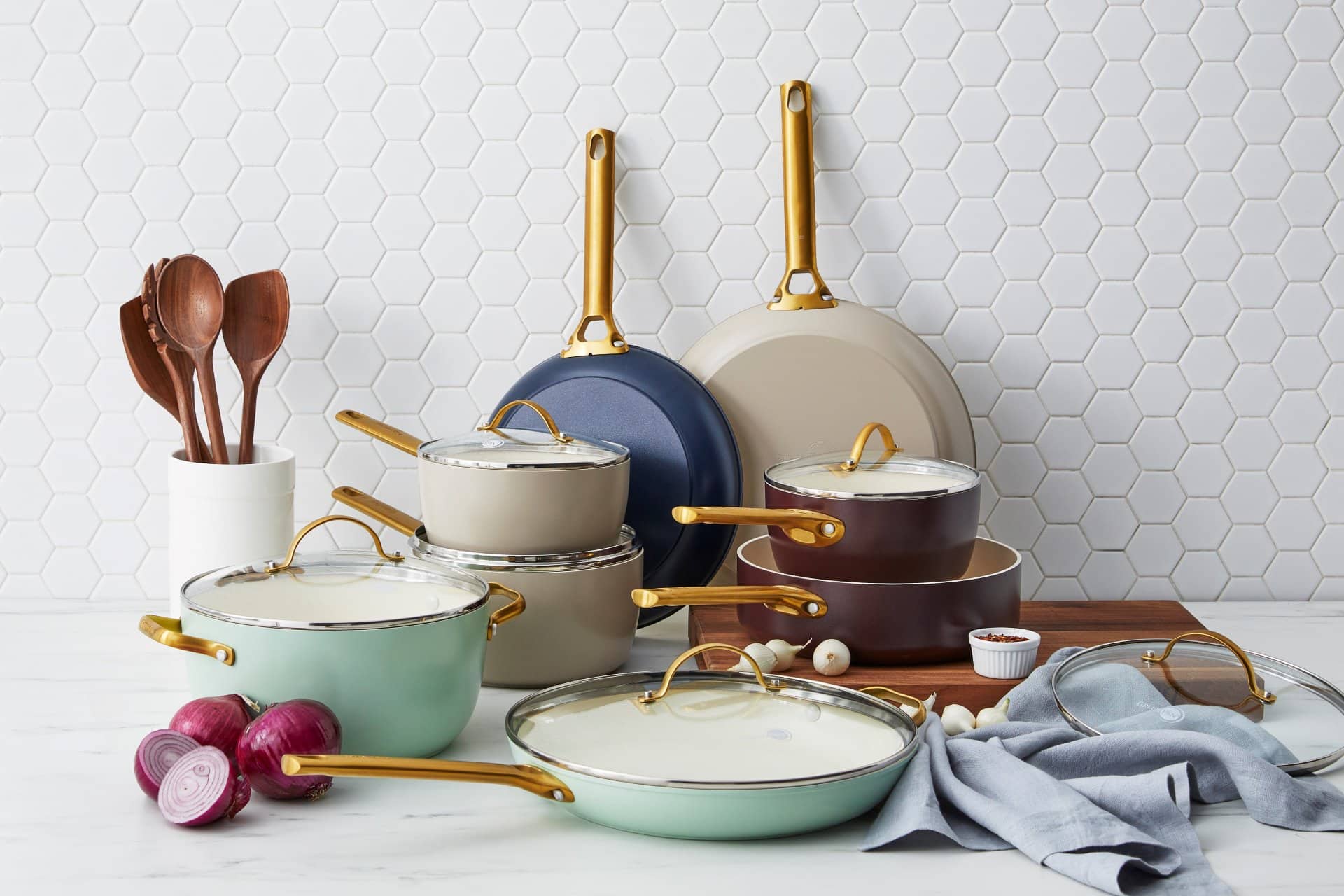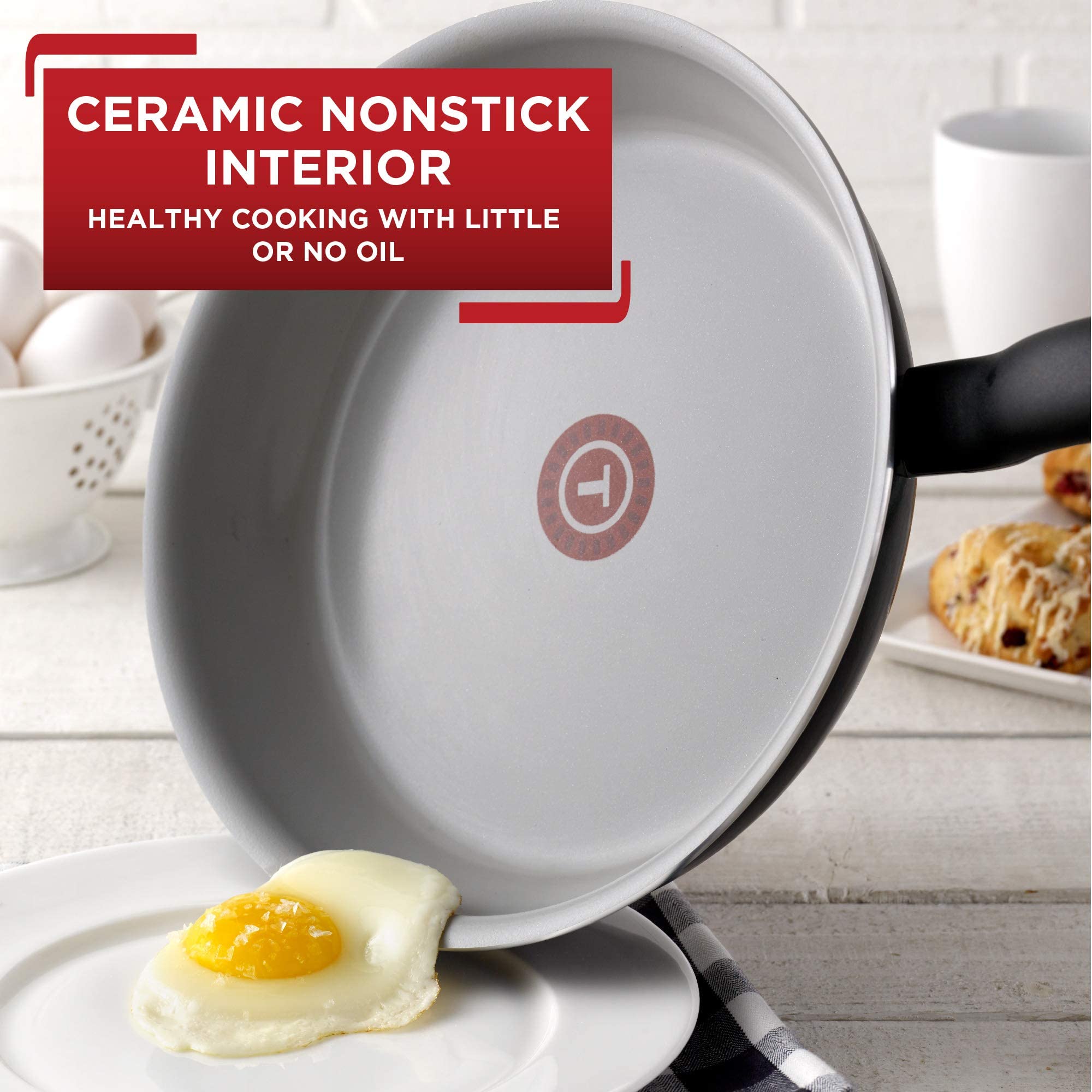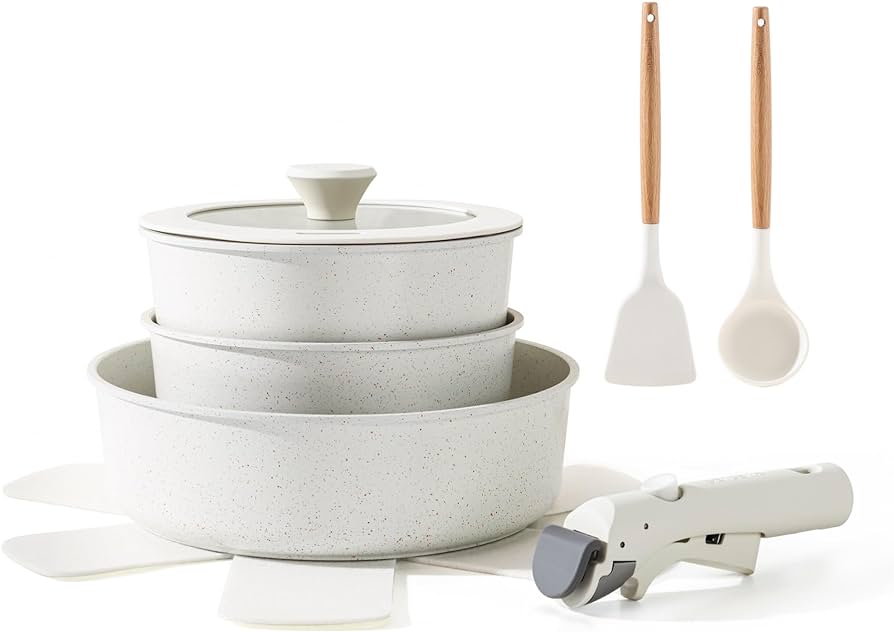
Introduction
Understanding The Oven Compatibility Of Ceramic Cookware
Ceramic cookware has become increasingly popular due to its numerous advantages, including even heat distribution, non-stick properties, and ease of cleaning. However, not all ceramic cookware is suitable for use in the oven. It is important to understand the oven compatibility of different types of ceramic cookware to ensure safe and effective cooking.
Importance Of Using Oven-safe Ceramics For Cooking
Using oven-safe ceramics for cooking is vital for several reasons:
- Versatility: Oven-safe ceramic cookware allows you to prepare a wide range of dishes, from casseroles and roasted vegetables to baked desserts, with ease. The ability to transfer a dish from stovetop to oven without having to transfer the food to a different dish makes cooking more efficient.
- Uniform cooking: The even heat distribution provided by oven-safe ceramics ensures that your food cooks evenly, without any hotspots that may cause uneven or partially cooked results. This not only enhances the flavor and texture of your dishes but also reduces the risk of foodborne illnesses.
- Time and energy efficiency: Oven-safe ceramics retain heat efficiently, reducing cooking times and energy consumption. This can be especially beneficial when preparing meals for large gatherings or when trying to save on utility bills.
- Ease of cleaning: Most oven-safe ceramics have a non-stick surface, which makes cleaning a breeze. The smooth glaze used in these cookware prevents food from sticking, allowing for easy removal and quick cleanup.
It is important to note that not all ceramic cookware is oven-safe. Some ceramics are coated with glazes or finishes that may not be suitable for high-temperature cooking. Always check the manufacturer’s instructions or labeling to ensure that your ceramic cookware is safe to use in the oven.
In conclusion, using oven-safe ceramics for cooking provides versatility, uniform cooking, time and energy efficiency, and easy cleanup. When using ceramic cookware, be sure to choose models that are specifically labeled as oven-safe for the best results.
Types Of Ceramic Cookware
Different Types Of Ceramic Cookware Available In The Market
There are several types of ceramic cookware available in the market, each with its own unique qualities and features. Here are some common types:
- Pure Ceramic Cookware: This type of cookware is made entirely of ceramic material, both inside and outside. It provides excellent heat distribution and retention, making it ideal for oven cooking. However, it may be more prone to chipping or cracking compared to other types.
- Ceramic-Coated Cookware: This type of cookware has a metal base (usually aluminum or stainless steel) with a ceramic coating on the cooking surface. The ceramic coating provides the non-stick properties and even heat distribution, while the metal base provides durability. Not all ceramic-coated cookware is oven-safe, so it is important to check the manufacturer’s instructions.
- Ceramic-Enamel Cookware: This type of cookware has a cast iron or steel base with a ceramic enamel coating. The ceramic enamel provides a smooth and non-stick cooking surface, while the metal base adds durability and heat retention. Most ceramic-enamel cookware is oven-safe, but it is always recommended to check the manufacturer’s instructions to be sure.
Identifying Oven-safe Ceramics
When shopping for ceramic cookware, it is important to look for specific indications that the cookware is oven-safe. Here are some things to look out for:
- Manufacturer’s Labeling: Look for cookware that is specifically labeled as oven-safe. This ensures that the cookware has been tested and deemed safe for use in the oven.
- Temperature Limit: Check the maximum temperature limit that the cookware can withstand. Oven-safe ceramics should be able to handle high temperatures without cracking or warping.
- Materials Used: Consider the materials used in the construction of the cookware. Pure ceramic cookware and ceramic-enamel cookware are generally more suitable for oven use compared to ceramic-coated cookware.
In conclusion, understanding the different types of ceramic cookware available in the market and knowing how to identify oven-safe ceramics is crucial for safe and effective cooking. Always follow the manufacturer’s instructions and recommendations to ensure the best results when using ceramic cookware in the oven.
Clues For Identifying Oven-safe Ceramics
Checking For Manufacturer’s Guidelines
When purchasing ceramic cookware, it is important to refer to the manufacturer’s guidelines to determine if it is safe to use in the oven. Here are some key factors to consider:
- Manufacturer’s Labeling: Look for cookware labeled specifically as oven-safe. This ensures that the product has undergone testing and meets the necessary safety standards.
- Temperature Limit: Check the maximum temperature limit specified by the manufacturer. Oven-safe ceramics should withstand high temperatures without cracking or warping.
- Materials Used: Consider the materials used in the cookware’s construction. Pure ceramic cookware and ceramic-enamel cookware are generally more suited for oven use compared to ceramic-coated cookware.
Reading Product Labels For Oven Compatibility Information
When browsing through different types of ceramic cookware, it’s important to read the labels carefully for oven compatibility information. Here are some details to look out for:
- Ceramic-Coated Cookware: This type of cookware typically has a metal base with a ceramic coating on the cooking surface. Check for indications of oven safety on the label.
- Pure Ceramic Cookware: If you are specifically looking for cookware suitable for oven use, opt for cookware made entirely of ceramic material both inside and outside.
- Ceramic-Enamel Cookware: This type of cookware often has a cast iron or steel base with a ceramic enamel coating. Look for labels indicating that it is oven-safe.
In summary, carefully examining the manufacturer’s guidelines and product labels for details regarding oven safety is essential when selecting ceramic cookware. By following these clues, you can confidently choose the right cookware for your oven cooking needs.

High-temperature Resistant Ceramics
Ceramic Materials Capable Of Withstanding High Oven Temperatures
When it comes to oven-safe ceramics, there are certain materials that are known for their ability to withstand high temperatures. These materials include:
- Porcelain: Porcelain is a type of ceramic that is fired at a high temperature, making it highly resistant to heat. It is often used in baking dishes and oven-safe cookware.
- Stoneware: Stoneware is another type of ceramic that is fired at a high temperature, resulting in a durable and heat-resistant product. It is commonly used in bakeware like casserole dishes and oven-safe dinnerware.
- Fireclay: Fireclay is a ceramic material that is specifically designed to withstand extremely high temperatures. It is commonly used in pizza stones and other oven accessories.
- Refractory ceramics: Refractory ceramics are ceramics that are specially formulated to have high resistance to heat and thermal shock. They are often used in industrial applications, such as kiln linings and furnace components.
Benefits Of Using High-temperature Resistant Ceramics In Cooking
There are several advantages to using high-temperature resistant ceramics in cooking:
- Versatility: High-temperature resistant ceramics can be used in a variety of cooking methods, including baking, roasting, grilling, and broiling. This versatility allows for more diverse and creative cooking options.
- Even heat distribution: Ceramics have the ability to distribute heat evenly, resulting in uniform cooking and consistent results.
- Retains heat: High-temperature resistant ceramics have the ability to retain heat for a longer period of time, which helps to keep food warm after it has been cooked.
- Non-reactive surface: Ceramics are non-reactive, meaning they do not interact with acidic or alkaline foods. This ensures that the flavors of your dishes remain pure and unaffected.
- Easy to clean: Most high-temperature resistant ceramics have a non-stick surface, making them easy to clean. They can often be simply wiped down or washed with mild soap and water.
In conclusion, using high-temperature resistant ceramics in cooking provides a range of benefits, including versatility, even heat distribution, heat retention, non-reactivity, and ease of cleaning. By choosing ceramics that are capable of withstanding high oven temperatures, you can ensure a safe and enjoyable cooking experience.
Oven-safe Ceramic Coatings
Exploring Ceramic-coated Cookware And Its Oven Compatibility
Ceramic coatings have become popular in the cookware industry for their non-stick properties and durability. They are often used on materials like aluminum or stainless steel to provide a smooth, heat-resistant surface. When it comes to using ceramic-coated cookware in the oven, there are a few factors to consider.
Not all ceramic coatings are oven-safe, so it’s important to read the manufacturer’s instructions for specific temperature limits. However, many ceramic-coated pans can safely withstand temperatures up to 450 degrees Fahrenheit (232 degrees Celsius) without any damage to the coating or the cookware.
Advantages And Limitations Of Ceramic Coatings
There are several advantages to using ceramic coatings in cookware:
- Non-stick surface: The ceramic coating provides a non-stick surface, making it easier to cook with less oil or butter and reducing the risk of food sticking to the pan.
- Uniform heat distribution: Ceramic coatings have excellent heat distribution properties, ensuring even cooking throughout the pan.
- Easy to clean: The non-stick surface of ceramic-coated cookware makes it a breeze to clean. Most food residues can be easily wiped away with a soft sponge or cloth.
- Versatility: Ceramic-coated cookware can be used on various stovetops, including electric, gas, and induction.
- Long-lasting: Proper care and maintenance can extend the lifespan of ceramic-coated cookware, making it a durable investment for the kitchen.
However, there are a few limitations to consider when using ceramic coatings:
- Temperature limitations: While many ceramic coatings can withstand high temperatures in the oven, it’s important to follow the manufacturer’s guidelines to prevent damage to the coating.
- Fragility: Ceramic coatings can be more delicate than other types of cookware finishes, so it’s important to handle them with care to avoid chipping or scratching.
- Not metal utensil-friendly: To preserve the integrity of the ceramic coating, it is recommended to use non-metal utensils when cooking with ceramic-coated cookware.
In summary, ceramic coatings offer several benefits for oven-safe cookware, including a non-stick surface, even heat distribution, and easy cleaning. However, it’s important to be mindful of the temperature limitations and handle the cookware with care to ensure its longevity. By following the manufacturer’s instructions and proper maintenance, ceramic-coated cookware can enhance your cooking experience and make cleanup a breeze.
Oven Temperature Limitations For Ceramics
Understanding The Maximum Oven Temperature Allowed For Different Ceramics
Ceramic coatings have gained popularity in the cookware industry due to their non-stick properties and durability. While they are commonly used on materials like aluminum or stainless steel, not all ceramic coatings are oven-safe. It is crucial to refer to the manufacturer’s instructions to determine the specific temperature limits for each type of ceramic-coated cookware.
When it comes to using ceramic-coated cookware in the oven, it is important to consider the following factors:
Preventing Damage Or Breakage By Adhering To Temperature Guidelines
- Temperature limitations: Although many ceramic-coated pans can handle temperatures up to 450 degrees Fahrenheit (232 degrees Celsius) without any damage, it is advisable to follow the manufacturer’s guidelines to prevent any harm to the coating or the cookware.
- Fragility: Ceramic coatings are more delicate compared to other types of cookware finishes. It is essential to handle them with care to avoid chipping or scratching that may compromise their effectiveness.
- Utensil recommendations: To maintain the integrity of the ceramic coating, it is recommended to use non-metal utensils when cooking with ceramic-coated cookware.
It is important to note that ceramic coatings offer several advantages for oven-safe cookware, such as a non-stick surface, even heat distribution, and easy cleaning. However, it is crucial to be mindful of the temperature limitations and handle the cookware with care to ensure its longevity. By following the manufacturer’s instructions and practicing proper maintenance, ceramic-coated cookware can enhance your cooking experience and simplify cleanup.

Oven-safe Ceramic Brands
Notable Ceramic Cookware Brands That Offer Oven-safe Options
When choosing ceramic cookware, it is essential to look for brands that specifically mention their products are oven-safe. Here are a few notable ceramic cookware brands that offer oven-safe options:
- GreenLife: GreenLife is known for its ceramic non-stick cookware that is free from toxic substances like PFOA and PFAS. Their ceramic-coated pans are oven-safe up to 350 degrees Fahrenheit (176 degrees Celsius).
- Red Copper: Red Copper ceramic cookware claims to have a copper-infused ceramic coating that provides excellent non-stick properties. Their products are oven-safe up to 500 degrees Fahrenheit (260 degrees Celsius).
- GreenPan: GreenPan offers a range of ceramic-coated cookware with a focus on sustainability. Their Thermolon ceramic coating is heat-resistant and can withstand oven temperatures up to 600 degrees Fahrenheit (315 degrees Celsius).
Reviews Of Popular Oven-safe Ceramic Cookware Sets
If you’re in the market for oven-safe ceramic cookware sets, here are a few popular options worth considering:
| Brand | Set Contents | Oven-Safe Temperature | Price Range |
|---|---|---|---|
| GreenLife Ceramic Cookware Set | Various sizes of pans and pots | Up to 350 degrees Fahrenheit | $50 – $100 |
| Red Copper Ceramic Cookware Set | Multiple pans, pots, and lids | Up to 500 degrees Fahrenheit | $80 – $150 |
| GreenPan Ceramic Cookware Set | Variety of pans and pots | Up to 600 degrees Fahrenheit | $100 – $200 |
These are just a few examples of oven-safe ceramic cookware brands and sets available in the market. Remember to always check the specific temperature limitations and care instructions provided by the manufacturer before using the cookware in the oven.
Tips For Using Ceramic Cookware In The Oven
Proper Usage And Care Guidelines To Ensure The Longevity Of Ceramic Cookware
To make the most out of your oven-safe ceramic cookware, here are some tips to follow:
- Read and follow the manufacturer’s instructions: Each brand may have specific guidelines for usage and care, so it’s important to read and follow them carefully.
- Avoid sudden temperature changes: Ceramic cookware can crack if exposed to extreme temperature changes. To prevent this, avoid placing a hot pan directly in cold water or placing a cold pan directly into a hot oven.
- Use oven mitts or pot holders: Ceramic cookware can become hot during cooking, so always use oven mitts or pot holders when handling them.
- Avoid using metal utensils: Metal utensils can scratch the ceramic coating, so it’s best to use wooden or silicone utensils to protect the non-stick surface.
- Allow the cookware to cool before cleaning: Before cleaning your ceramic cookware, allow it to cool down completely to prevent damage.
- Hand wash whenever possible: While some ceramic cookware is dishwasher-safe, hand washing is generally recommended to preserve the non-stick coating and extend its lifespan.
Precautions For Safe Usage In The Oven
When using ceramic cookware in the oven, there are a few precautions to keep in mind:
- Do not exceed the maximum oven-safe temperature: Check the manufacturer’s instructions to determine the maximum temperature the cookware can safely withstand in the oven.
- Avoid extreme temperature fluctuations: Avoid placing the cookware directly under a broiler or subjecting it to sudden extreme temperature changes, as this can cause cracking.
- Place cookware on oven racks: When placing ceramic cookware in the oven, make sure to place it on oven racks rather than directly on the oven floor. This allows for proper heat circulation and prevents damage to the cookware.
- Use caution when removing from the oven: Always use oven mitts or pot holders to handle hot ceramic cookware, as they can retain heat for a significant amount of time.
By following these tips and precautions, you can safely and effectively use ceramic cookware in the oven for cooking a variety of dishes.
Tips For Using Ceramic Cookware In The Oven
Proper Usage And Care Guidelines To Ensure The Longevity Of Ceramic Cookware
To make the most out of your oven-safe ceramic cookware, here are some tips to follow:
- Read and follow the manufacturer’s instructions: Each brand may have specific guidelines for usage and care, so it’s important to read and follow them carefully.
- Avoid sudden temperature changes: Ceramic cookware can crack if exposed to extreme temperature changes. To prevent this, avoid placing a hot pan directly in cold water or placing a cold pan directly into a hot oven.
- Use oven mitts or pot holders: Ceramic cookware can become hot during cooking, so always use oven mitts or pot holders when handling them.
- Avoid using metal utensils: Metal utensils can scratch the ceramic coating, so it’s best to use wooden or silicone utensils to protect the non-stick surface.
- Allow the cookware to cool before cleaning: Before cleaning your ceramic cookware, allow it to cool down completely to prevent damage.
- Hand wash whenever possible: While some ceramic cookware is dishwasher-safe, hand washing is generally recommended to preserve the non-stick coating and extend its lifespan.
Precautions For Safe Usage In The Oven
When using ceramic cookware in the oven, there are a few precautions to keep in mind:
- Do not exceed the maximum oven-safe temperature: Check the manufacturer’s instructions to determine the maximum temperature the cookware can safely withstand in the oven.
- Avoid extreme temperature fluctuations: Avoid placing the cookware directly under a broiler or subjecting it to sudden extreme temperature changes, as this can cause cracking.
- Place cookware on oven racks: When placing ceramic cookware in the oven, make sure to place it on oven racks rather than directly on the oven floor. This allows for proper heat circulation and prevents damage to the cookware.
- Use caution when removing from the oven: Always use oven mitts or pot holders to handle hot ceramic cookware, as they can retain heat for a significant amount of time.
Conclusion
Summarizing The Oven-safety Of Ceramics
In conclusion, ceramic cookware can be safely used in the oven by following proper usage and care guidelines. By reading and following the manufacturer’s instructions, avoiding sudden temperature changes, using oven mitts or pot holders, avoiding metal utensils, allowing the cookware to cool before cleaning, and hand washing whenever possible, you can ensure the longevity and effectiveness of your ceramic cookware in the oven.
Making Informed Decisions When Choosing Ceramic Cookware For Oven Use
When selecting ceramic cookware for oven use, it is important to check the manufacturer’s instructions for the maximum oven-safe temperature and to choose options that can withstand the temperatures required for your cooking needs. It is also advisable to consider the material of the cookware, such as the presence of a non-stick surface, and to choose utensils that are compatible and won’t damage the ceramic coating. By making informed decisions, you can enjoy the benefits of using ceramic cookware in the oven while ensuring its safe and long-lasting performance.
Frequently Asked Questions about Can Ceramic Go in Oven: Oven-Safe Ceramics – Clarifying the Oven Compatibility of Ceramic Cookware
Q: Can ceramic go in the oven?
A: Yes, certain types of ceramic cookware can indeed go in the oven. However, it is important to check the specific manufacturer’s instructions and product labels to ensure oven compatibility.
Q: How can I know if my ceramic cookware is oven-safe?
A: Most oven-safe ceramic cookware will have clear markings or labels indicating its oven compatibility. Look for phrases such as “oven-safe,” “oven-proof,” or temperature suitability for oven use. If you are unsure, consult the manufacturer’s instructions or website for clarification.
Q: What temperature can ceramic withstand in the oven?
A: The temperature tolerance of ceramic cookware can vary depending on the type and quality of the ceramic used. Generally, high-quality ceramics can withstand oven temperatures up to 500-600 degrees Fahrenheit (260-315 degrees Celsius). However, it’s always best to refer to the manufacturer’s guidelines for the specific cookware you own.
Q: Can all types of ceramics be used in the oven?
A: Not all ceramics are oven-safe. There are specific types of ceramic cookware designed to withstand high temperatures without cracking or breaking. Always check the manufacturer’s specifications or labels to confirm the oven compatibility of your ceramic cookware.
Q: Are there any precautions I should take when using ceramic cookware in the oven?
A: It is important to handle your ceramic cookware with care in the oven. Here are some precautions to consider:
- Avoid sudden temperature changes, such as placing cold ceramic cookware directly into a preheated oven.
- Do not place ceramic cookware on direct heat sources, such as stovetop burners or hotplates.
- Use oven mitts or pot holders when handling hot ceramic dishes.
- Allow your ceramic cookware to cool down before cleaning or submerging in water.
Q: Are decorative ceramic pieces suitable for oven use?
A: Decorative ceramics, such as vases or pottery, are usually not intended for oven use unless explicitly stated otherwise by the manufacturer. These pieces may have glazes or finishes that are not oven-safe, and subjecting them to high temperatures may cause damage.
Q: Can ceramic cookware be used in microwave ovens?
A: Most ceramic cookware is not recommended for use in microwave ovens unless it is expressly labeled as microwave-safe. Microwaves heat food by exciting water molecules, and certain ceramic glazes or finishes may contain metal particles that can cause the cookware to become hot and potentially create a fire hazard.
In summary, certain types of ceramic cookware can safely be used in the oven, but it is crucial to verify their oven compatibility through manufacturer instructions and product labels. Always exercise caution and follow any specific guidelines provided to ensure the longevity and safety of your ceramic cookware.

Noel Martinez, the owner of theholygrillsf.com, uses social media to connect with the community and share delicious updates from The Holy Grill. Follow Noel Martinez for mouthwatering food photos, exciting event announcements, and behind-the-scenes glimpses into the world of The Holy Grill. Stay in the loop and never miss out on the latest culinary adventures!